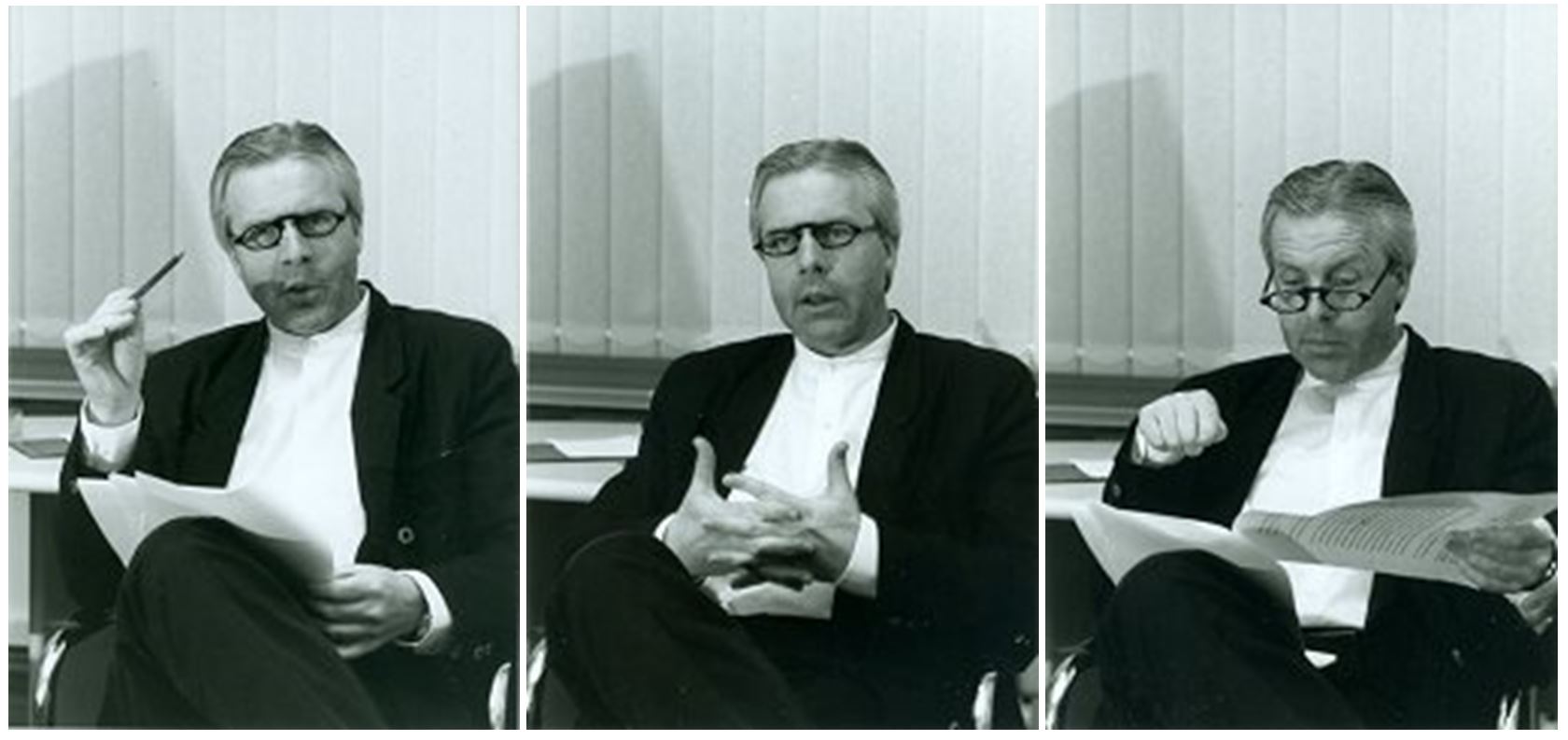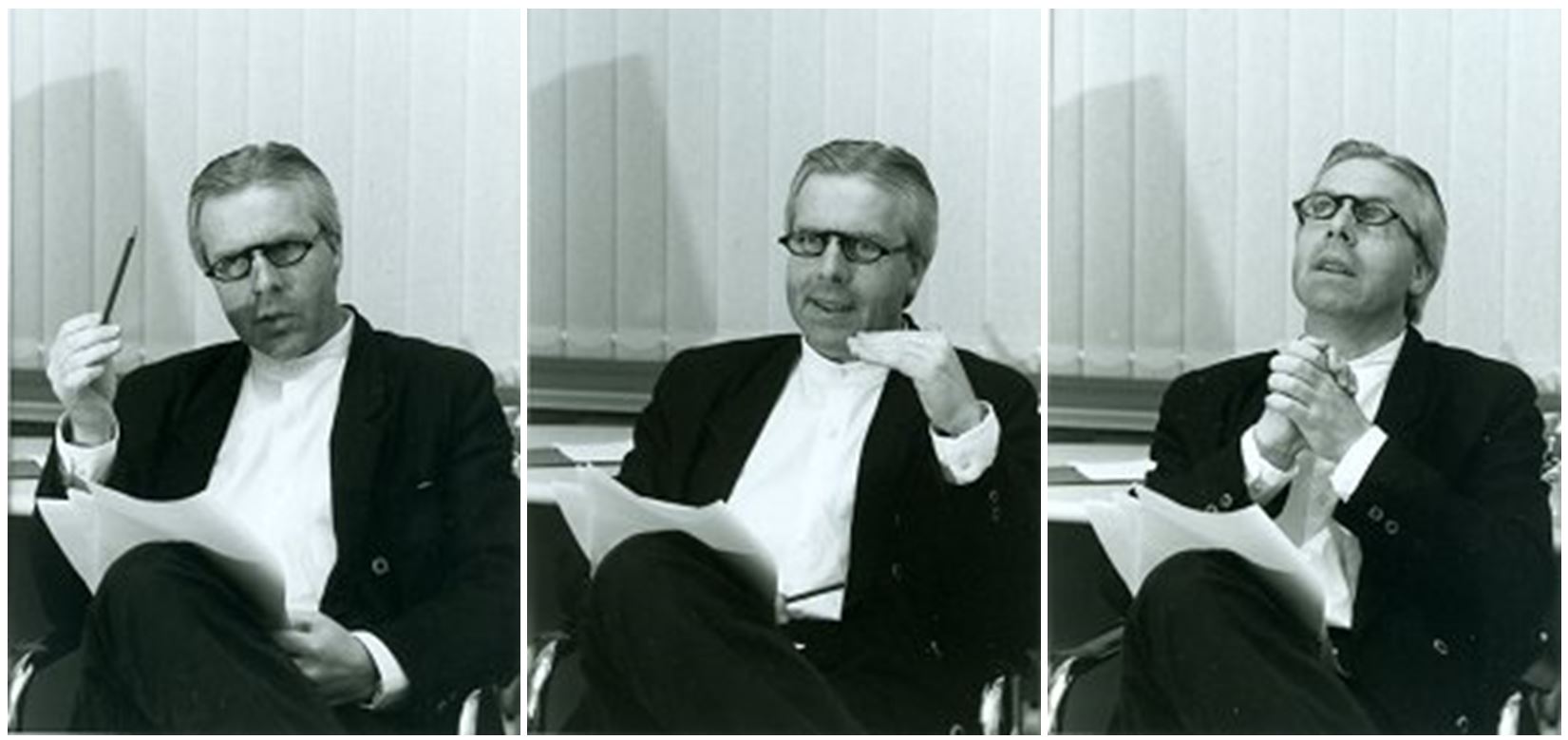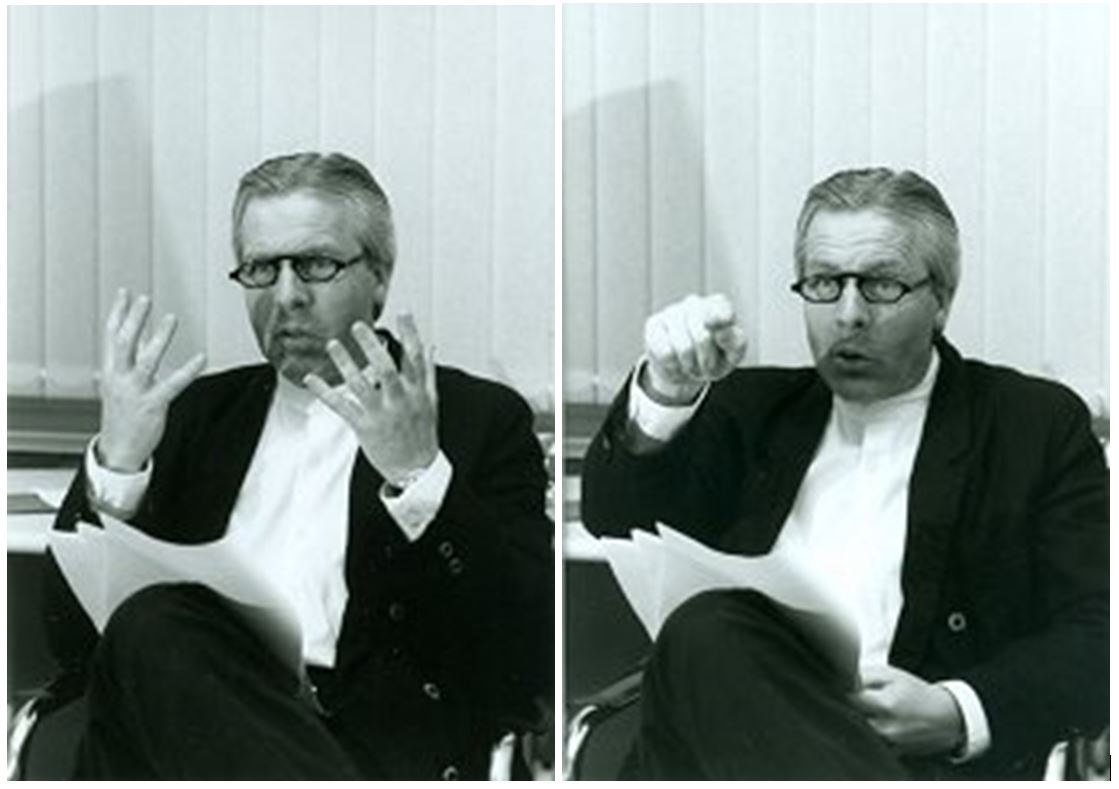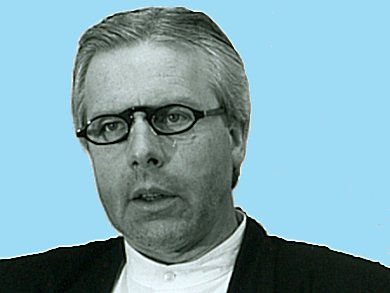Professor Erwin Reicher took up the first ever Professorship for Applied Popularity Research at the University of Kleinzack in 2006. Since then, he has regularly written about the tension between natural sciences and the media. He is also the author of the incredible books Fact or Fiction? Scientists in the Weimar Republic and Einstein’s Children – Quo Vadis?
He talks to the ChemViews magazine about chemistry’s bad reputation, how to improve it, and what chemists can learn from professional sportsmen.
Professor Reicher, thank you for agreeing to discuss with us the badly damaged prestige of chemists, indeed of the entire field of chemistry.
You are yourself a chemist and must be quite aware of the problem at hand. From the perspective of your new field, applied popularity research, are there ways that chemists can address their image problem and get themselves out of this mess?
Yes, certainly. But change won’t happen overnight. It’s sure to be a long and drawn-out process, and chemists themselves are going to have to do the bulk of it.
Several of our studies in Europe, as well as in the US and Japan, have shown that chemists’ disappearing popularity is essentially their own fault. Let’s face facts: Relative to their economic worth, chemists’ media presence is less than negligible. Chemists lack presence. Chemists lack charisma. Chemists are simply deadly dull, always sticking pedantically to the facts. No daring, no vision.
Today’s public demands something else: It wants its emotions to be addressed. That feel-good factor, that emotional high—it’s just not there in chemistry-related ads, interviews, and publications. The ability to relate to a field is a gut thing, it’s not a matter of number crunching.
Now, why can’t chemists discover something absolutely crucial for the chap in the street for once? Designer drugs like Ecstasy were a good start, but it is illegal and expensive. What about modifying ordinary aspirin so it will increase male sex drive tenfold? Why don’t chemists’ press conferences ever unleash a real sensation? For instance, the discovery of a new fuel enhancer that allows the VW Rabbit to go 100 km on just 2 pints of whipped cream. Successful public relations work demands that daring sort of slant.

Wouldn’t that just be sensationalism, based on phoney science?
No, not at all. In popularity research, we refer to this procedure as ‘fact convolution’. It’s mere folly for chemists to try to get the details right all of the time. Using fact convolution, one can make statements with only limited accuracy credible to a large part of the public.
Now, politicians don’t operate any differently, do they, and they’re not doing too badly. But there are also examples of successful use of fact convolution in other fields, such as in alternative medicine, or by the author Rupert Sheldrake. Only the boldest of assertions, not based on evidence, are going to increase public support for chemistry, giving it majority appeal. It’s certainly worth considering.
Yes, perhaps. But what if we take the Fleischmann-Pons case—the one that had to do with achieving ‘cold fusion’. That wasn’t only damaging for chemistry, but for all natural sciences!
Precisely! That was a disaster. Chemists really put their foot in it there.
You mean, you don’t blame Fleischman and Pons?
Of course not! The two of them had a great idea. Got it straight out into the media. The apparatus glowed with a bluish tinge against a dark background, it looked superb in the promotional photos. That’s what I call a media-effective presentation of scientific results. But then some so-called colleagues came along, and, instead of rejoicing in chemistry’s new-found popularity, they pointed out—with pathological meticulousness, I might add—some insignificant mistakes in the way the study was set up. In the end, this left Fleischmann and Pons looking like dolts and cheats. The electrochemists were like bulls in a china shop. The worst of it is that these self-appointed defenders of the faith believe to this day that they did science a great service by sticking their noses in.
My goodness, what a missed opportunity that was! Why, there would have been an endless flow of money into chemistry faculties for years, a dozen new professorships, several major research grants, a new Max-Planck-Institute and appearances on breakfast television. Terms like standard potential, EMF, tunneling and overpotential would be known to every housewife. But no, thanks to the small-mindedness of chemists, no one in his right mind is interested in electrochemistry. Was that what it’s all about? I think not.
Aren’t there any less controversial strategies to improve chemists’ image?
Certainly, any number of them. I’ll give you a few examples. But first, let me be provocative: Why the devil should the public take chemists seriously, when chemists don’t even take themselves seriously? If Professor X is invited to give a lecture to the chemistry faculty, he will inevitably have to be told that, unfortunately, funds are short, and his hosts can’t possibly provide him appropriate accommodation. But, wonder of wonders, there is a small hotel located right near the university. The owners are delightful and keep the place very tidy. Professor X assures his hosts that creature comforts are not very important to him. After all, he’s only a scientist, isn’t he? My God, understatement is one thing, but why must chemists belittle themselves to the extent that they can be swept under the carpet? They’ll end up fading into insignificance if they go on like that.
In your opinion, how should one go about changing the procedure for inviting guest lecturers?
Let me demonstrate using this illustration. When Professor X is invited to speak, he thanks his hosts politely for the honor and refers them to his PR manager for all further arrangements. The manager co-ordinates his diary appointments and negotiates his fees, receiving a 15 % cut. Obviously, although nothing has changed, fees go sky high. In popularity studies, we call that the Hedgefund Effect.
Along with the fee, the manager negotiates other aspects of the guest lecturer’s appearance, such as the police motorcade that accompanies the Professor from the airport, tasteful flower arrangements in the lecture hall—no wilting asters in retorts!—and the after-lecture session in a posh local eatery. Forget the years of spaghetti Bolognese at the cheap and cheerful Italian around the corner. Indeed, the whole culinary experience must be revamped. Rather than tea and stale ginger nuts with the Head of Department, there ought to be a selection of fine cheeses and baguette, accompanied by a 1945 Château Mouton-Rothschild to wash down the gossip about who is going to get which chair.
Just as the lecture is about to begin, the Professor dons a colorful robe. He parades into the lecture hall, greeted by a trumpet fanfare. Now that’s what I call a dignified welcome—it’ll certainly make the audience sit up and take note.
During the lecture, the applause-o-meter and cries of ‘da capo’ indicate which slides are most popular and worth repeating. As the lecture comes to a close, the vice-chancellor of the university jumps up and cries: ‘BRILLIANT!’, rousing the audience to a frenzy. A panel of the local chemical society then scores the lecture. Like in ice-skating, the first mark is for content and the second for artistic presentation. If the overall score is below average, the fee is reduced to cover only the Professor’s costs. That should really liven things up, don’t you think?
Really spectacular lectures can be offered to television, showing them in prime time. Many will get better ratings than your average ‘X-Factor’ or ‘Songs of Praise’. Good lecturers can demand even higher fees for their next performance. Now that’s what I call achievement-oriented remuneration. Really top class performers can even demand a couple of new lab assistants, you know, some extra post-graduates or the like.

Did you just say, ‘… a few extra post-graduates’?
Yes, of course. They carry out all the research anyway, and they cost a mere pittance. By the way, post-graduates should be paid according to the results of their first degree. They should also be transferable. Yes, indeed, a Professor can then arrange to trade a post-graduate for an NMR spectrometer or a one-year guest lectureship at the University of Sasulatan. Of course, the post-graduate will be reimbursed for any inconvenience.
Wouldn’t that be a form of post-modern serfdom for the Ph.D. student?
I beg your pardon. Ethics has got nothing to do with this. Think about professional footballers. Have you heard a single protest from them? Never! Good post-graduates should know their market value and be drawing a good wage.
But wouldn’t basic chemistry research simply dissolve into a Roman circus?
Do you want popularity or not? Look, we can learn a great deal from the sporting world. Think about the fact that sporting heroes with the IQ of lumpy porridge are earning millions simply because they can dribble. By comparison, the measly pay packet of capable post-graduates is an absolute scandal. But higher pay can only come from greater overall funding, and that in turn depends on making the public care passionately about chemistry. But you aren’t going to achieve that with recondite experiments about the ‘Epoxidation of the 19-cis double bond in the aggregation pheromone of Southern Lebanese barkbeetles‘. That’s a non-starter. You’ve got to jazz things up a bit. Why can’t chemistry be done competitively?
Do you really mean that chemists should hold competitions? How would that work?
The initial analysis of an extensive poll we carried out in conjunction with Harvard University, USA, shows that we ought to be concentrating on a World Chemistry League, like the British Premier League or German Bundesliga. Yes, our survey shows that a World Chemistry League has a good chance of winning over the majority of current soccer fans. Picture it: The final would be called the World Chemistry Cup. Wouldn’t that be fantastic! Don´t you think that, as an example, the average Britain would be more attracted to such an intellectual battle than a boring rowing race on the River Thames with always the same two teams.
In the World Chemistry League, the chemistry faculties of different universities would compete. The vice-chancellors would serve as trainers, getting the female and male players into sound mental condition. Competition would take place in the following areas:
- precision titration in the lying and sitting positions
- solvent extraction marathon
- rotary evaporation in the solvent classes: b.p. under 100 ºC and over 150 ºC.
- 4 times 500 mL fractional vacuum distillation
- melting point determination (Greek-Roman and freestyle)
- Grignard starting (with and without iodine)
- recrystallization of crude naphthaline in the classes Fly- (100 g), Bantam- (250 g), Welter- (1 kg) and Heavyweight (5 kg)
- inorganic and organic high-speed nomenclature
- structure determination tetrathlon (IR-UV-MS-NMR)
Matches would be broadcast live on TV. There would be a cheerleading squad comprising nubile post-graduates. Fans would be kitted out in university hats and scarves. Incidentally, that would be a nice little money-spinner. Giving the teams catchy names would help make them better known. Think of it: On a given Saturday afternoon, all over the world, fans would be plonked down in front of the TV, a spread of beer and crisps at hand, for the games between the Tokyo Tosylates, Albuquerque Albumins, Halifax Halogens, Irish Isotopes, Polish Poloniums, Brussels Bromines, Moscow Manometers, Amsterdam Autoclaves, Rome Rare Gases, Tijuana Test Tubes, Leicester Lachrymators, and Berlin Bunsen Burners.
Chemistry as a sport could bring a whole new meaning to worldwide integration and that’ll surely open up chemistry to whole host of slush funds.
Wouldn’t these matches prevent some chemists from participating, since some fields, such as radiochemistry or stereoselective synthesis, can’t really carry over to a TV format?
That’s a very important point—how we refer to the different sub-disciplines. Here, the physicists are streets ahead of us. They’ve renamed ‘nuclear physics’ simply ‘high energy physics’. That sounds better now, doesn’t it? In popularity research, we call this a transcendental reflection of emotion. Couldn’t ‘radiochemistry’ be renamed ‘radiant chemistry’, with a smiley sun as its logo?
Here’s another example: Working groups addressing stereoselective synthesis of certain insect pheromones could easily call their field ‘horny chemistry’. Can you imagine what would happen if, now and again, a little scandal emerged from an Institute for Horny Chemistry and somehow made its way into the tabloids, with Page Three photos and all? The public might be up in arms, but the numbers taking chemistry degrees would skyrocket. Chemistry could become the most competitive subject of all time. And so it should be.
Once you get members of the public interested in their local chemistry faculty, however, you’ve got to keep them interested. Think big and think popular. Lay on regular evening lectures with practical tips for housewives (‘λmax of Shepherd’s Pie’), children (‘Building a Three-phase Solid-state Rocket’), the local literary circle (‘Romeo, Juliet, and the Separation Process’), and senior citizens (‘Mixing Your Own Denture Cleaner’). This will not only promote public acceptance of chemistry, but members of the public will feel bonded to ‘their’ chemistry faculty. The progress of individual Ph.D. students will be covered regularly in the local paper. Readers will share in their ups and downs. What we must build is an emotional bond with the public. If a synthesis experiment goes wrong for the fifth time, dozens will feel the need to leave chocolate and flowers at the porter’s lodge.
Really big experiments will be noted well ahead of time in a calendar of events. Hours before the experiment begins, chemistry faculty fans will gather, brandishing university hats and scarves and singing the university anthem. If the experiment succeeds, the Head of Department will announce the good results to the waiting crowd. Zealous fans will then carry the successful Ph.D. student around the lab on their shoulders, accompanied by deafening cries of jubilation. There will be singing and dancing and raucous reverie until the wee hours of the morning. Can you imagine how motivating that would be for the staff?

What you are suggesting is a completely new way of looking at staff motivation.
Not only that. Never underestimate the importance of the outward impression made by the chemistry faculty’s facilities. It is well known that first impressions are the most important ones. At the moment, first impressions of chemistry facilities are pathetic. Your typical chemistry lab is, frankly, a mess. Imagine the building as a whole. As you enter, the hallway walls are littered with fliers for macrobiotic women’s groups, esoteric tennis techniques, and primal scream courses in Tuscany. The tea-room is filled with fourth-hand furniture. This may suit a lefty pub, but it is certainly not fitting for a Temple of Science. To get the ambience right, we’ve got to bring in interior designers. Proper acoustics, cascading lights, mobiles and colorful object d’art should make curious visitors aware of both the intellectual gregariousness and multicultural perspective of all those who work there.
Naturally, the chemist’s wardrobe has also got to get up to snuff, in order to complement the new designer environment. At the moment, dress in the chemistry lab is a horror to behold. The staff run around in lab coats that have more holes than a ton of Polo mints. The Head of Department, however, in his whiter-than-white coat, two sizes too big and complete with ironed creases in all the wrong spots, looks like something out of Monty Python. What we need here is an emergency dose of haute couture. Nothing else will do. Karl Lagerfeld will be commissioned to design a lab coat collection, using only the finest Tibetan silk brocade. Lab coats will soon be all the rage at Covent Garden. ‘Get the Chemistry Look’ – how’s that for an effective marketing slogan? It’s just the kind of thing that scores points with the public.
At present, lab equipment is also entirely lacking, in an aesthetic sense. Practical but pretty awful. Why can’t Colani ever design a burette or a rotary evaporator? One could turn these things into sought-after collectibles. Wedgwood could make annual distillation flasks rather than just boring decorative plates, which could be sold in the Institute gift shop. That’s what I call a democratically legitimate alternative source of income.
Of course, grants committees should take into account these concerted efforts to render the chemistry faculty aesthetically pleasing. Grants should be awarded based on both the quality of research and the proper ambience of the chemistry facilities.
These are just some initial thoughts on the subject. A truly comprehensive campaign would have to be carried out from the top down. Marketing people, art directors, advertising planners, psychologists, and, of course, popularity researchers would have to put all the elements together. Giving chemistry a good name again, a positive image—that’s a real challenge. But it can be done. If chemists do their bit, I can just about guarantee success.
Professor Reicher, thank you very much for this interview!

Erwin Reicher was born in 1968 and studied chemistry and communications in Munich, Germany, and Amsterdam, the Netherlands. Reicher’s dissertation, which addressed ‘Public Perception of Alchemy in Holland during the Counterreformation’, led to research fellowships in London, UK, Tokyo, Japan, and Los Angeles, USA. After the publication of his book, Fact or Fiction? Scientists in the Weimar Republic, Professor Reicher became a public relations consultant much in demand within various industries. In 2006, he took up the first ever Professorship for Applied Popularity Research at the University of Kleinzack.
In addition to his academic responsibilities, Professor Reicher regularly publishes on the tensions between natural sciences and the media. He is also the author of the successful textbook, Einstein’s Children – Quo Vadis?
In many countries, April Fools’ Day or All Fools’ Day is an annual custom on April 1 involving practical jokes and hoaxes.
Also of Interest
- Interview with Fridolin E. Coli
Author: Uta Schaefer and Vera Köster
Fridolin E. Coli, gram-negative rod-shaped bacterium, talks about his more than one hundred years of experience in research
Other articles by Klaus Roth published by ChemistryViews; selection below:
- In Espresso — A Three-Step Preparation
Klaus Roth proves that no culinary masterpiece can be achieved without a basic knowledge of chemistry
DOI: 10.1002/chemv.201000003 - In Chocolate — The Noblest Polymorphism
Klaus Roth proves only chemistry is able to produce such a celestial pleasure
DOI: 10.1002/chemv.201000021 - In Sparkling Wine, Champagne & Co
Klaus Roth shows that only chemistry can be this tingling
DOI: 10.1002/chemv.201000047 - In Chemistry of a Hangover — Alcohol and its Consequences
Klaus Roth asks how can a tiny molecule like ethanol be at the root of so much human misery?
DOI: 10.1002/chemv.201000074 - In The Chemist’s Fear of the Fugu
Klaus Roth shows that the chemist’s fear of the fugu or pufferfish extends as far as the distinctive and intriguing poison it carries
DOI: 10.1002/chemv.201000104 - In Chemistry of a Christmas Candle
Klaus Roth explains that when we light a candle, the chemistry we are pursuing is not only especially beautiful, but also especially complex
DOI: 10.1002/chemv.201000133 - In Pesto — Mediterranean Biochemistry
Klaus Roth uncovers the nature of this culinary-chemical marvel, and thereby comes to enjoy it all the more
DOI: 10.1002/chemv.201200001 - Video Interview with Klaus Roth





Professor Reicher, what a rare earth vision, bromenish. I started reading and go on like mercury over whole of article. Sodium glowing (I replacing Mind blowing in my society). Prof. Erwin Reicher I loved your idea of dignity and portraying chemist an Earning creature, because we dull creature lack that nature.